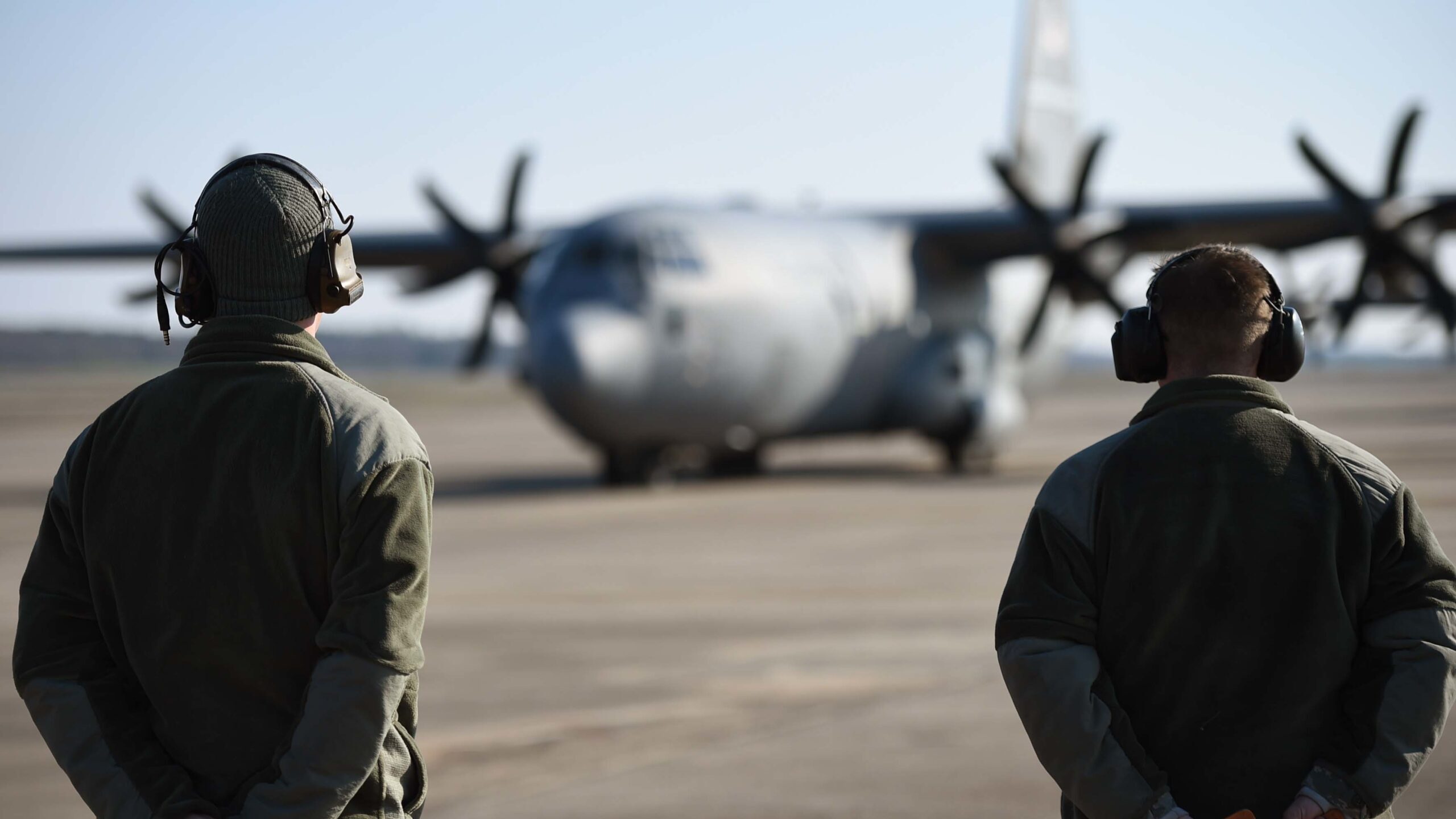
Crew chiefs from the 317th Aircraft Maintenance Squadron at Dyess Air Force Base, Texas wait for take-off Mar. 12, 2018 at Little Rock Air Force Base, Ark. (U.S. Air Force photo by Staff Sgt. Dana J. Cable)
WASHINGTON — The challenge of resupplying forces across vast distances in the Indo-Pacific in the event of a fight is still vexing the Pentagon, with a key Air Force logistician saying that though there are several options to solve the problem, officials aren’t sure what path might be best.
“That is probably the largest conundrum of them all as we look at this problem set,” Air Force Col. James Hartle said Tuesday when discussing how to resupply troops in the Indo-Pacific during a virtual discussion hosted by the Mitchell Institute. “I don’t think we have a good answer yet.”
Figuring out how to keep supplies flowing in the Indo-Pacific will be a key task for planners seeking to head off a potential conflict with China over an invasion of Taiwan. Unlike Ukraine, which is sandwiched between NATO supply hubs, the island of Taiwan poses a different problem altogether, with wargame analysis showing that resupplying troops could be a leading issue for both US- and Chinese-aligned forces.
Anticipating that stacking too many airmen or supplies in one location could cripple operations if it’s attacked, the Air Force is spreading out its Indo-Pacific forces through its Agile Combat Employment (ACE) concept. The number of bases it could use is also set to increase as a result, with Brig Gen. Mike Zuhlsdorf stating during the Mitchell Institute event that the number “will grow in increments that are visible through time, across probably two or three FYDPs [future year defense plans] as we work through that.”
Zuhlsdorf, Air Force deputy chief of staff for logistics, engineering and force protection, didn’t share exactly how many bases that would be but said that the final number depends on funding.
But Hartle, also a senior member of the service’s logistics staff, made clear Tuesday that officials have “a lot of options” and are still “working through that problem.” He noted that one solution seems to be gaining “traction” among planners: Instead of waiting for supplies to be requested, officials could “automatically” ship out certain materials that are likely to be in need. The arrangement, he said, would be similar to a subscription service that regularly sends new items every month.
“Let’s push the things that the data tells us that those forward units will probably be using, not [wait] for the airmen to write the order, submit it in the computer and then ask for a required delivery date,” he said. “We just know we’re going to push a lot of that forward. I think that is a good way to get after the first opening stages of that.”
Package ETA
Still, even if they’re ordered ahead of time, officials might have a hard time keeping tabs on those supplies when they’re in transit, a US Transportation Command (TRANSCOM) official warned on Monday.
Speaking during a panel at the National Defense Industrial Association’s Emerging Technologies for Defense conference in Washington, TRANSCOM Deputy Commander Army Lt. Gen. John Sullivan said that officials at TRANSCOM are wedded to decades-old technology to track supplies in real time, a capability known as “in-transit visibility.” And following what Sullivan called a “somewhat underwhelming” industry day in April, more work to improve the command’s tracking tech is needed.
“We want to avail ourselves of the technologies out there to help us improve in-transit visibility. We’re not where we need to be right now,” he said.
Being able to accurately track supplies in real time is a critical component of command and control, Sullivan noted, who emphasized that it would be “imprudent if not foolish” for planners to expect that recent decades of uncontested logistics operations would continue for future conflict.
“We see this as a challenge. We also see this as an opportunity. And we’re very much focused on this going forward,” he said.






















